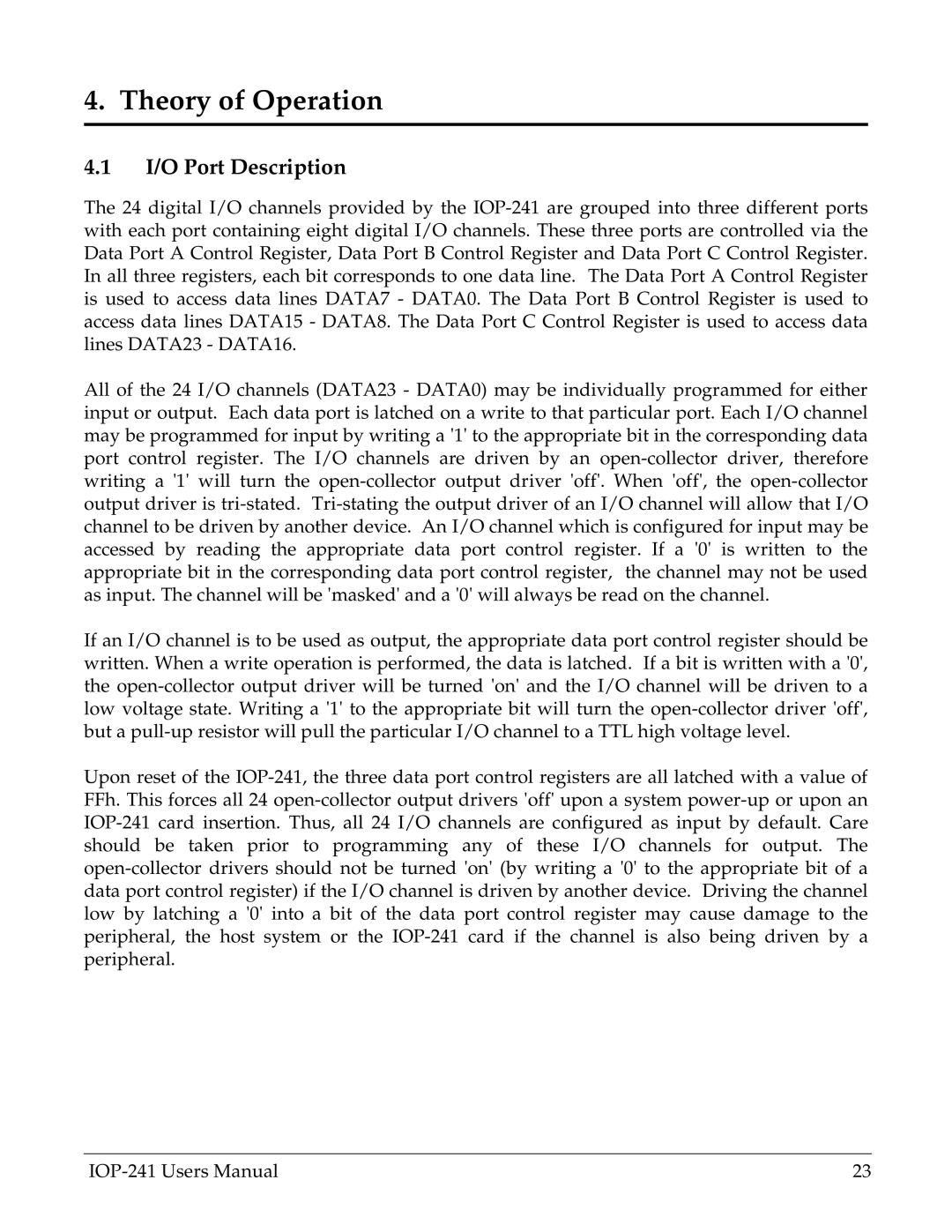
4. Theory of Operation
4.1I/O Port Description
The 24 digital I/O channels provided by the IOP-241 are grouped into three different ports with each port containing eight digital I/O channels. These three ports are controlled via the Data Port A Control Register, Data Port B Control Register and Data Port C Control Register. In all three registers, each bit corresponds to one data line. The Data Port A Control Register is used to access data lines DATA7 - DATA0. The Data Port B Control Register is used to access data lines DATA15 - DATA8. The Data Port C Control Register is used to access data lines DATA23 - DATA16.
All of the 24 I/O channels (DATA23 - DATA0) may be individually programmed for either input or output. Each data port is latched on a write to that particular port. Each I/O channel may be programmed for input by writing a '1' to the appropriate bit in the corresponding data port control register. The I/O channels are driven by an open-collector driver, therefore writing a '1' will turn the open-collector output driver 'off'. When 'off', the open-collector output driver is tri-stated. Tri-stating the output driver of an I/O channel will allow that I/O channel to be driven by another device. An I/O channel which is configured for input may be accessed by reading the appropriate data port control register. If a '0' is written to the appropriate bit in the corresponding data port control register, the channel may not be used as input. The channel will be 'masked' and a '0' will always be read on the channel.
If an I/O channel is to be used as output, the appropriate data port control register should be written. When a write operation is performed, the data is latched. If a bit is written with a '0', the open-collector output driver will be turned 'on' and the I/O channel will be driven to a low voltage state. Writing a '1' to the appropriate bit will turn the open-collector driver 'off', but a pull-up resistor will pull the particular I/O channel to a TTL high voltage level.
Upon reset of the IOP-241, the three data port control registers are all latched with a value of FFh. This forces all 24 open-collector output drivers 'off' upon a system power-up or upon an IOP-241 card insertion. Thus, all 24 I/O channels are configured as input by default. Care should be taken prior to programming any of these I/O channels for output. The open-collector drivers should not be turned 'on' (by writing a '0' to the appropriate bit of a data port control register) if the I/O channel is driven by another device. Driving the channel low by latching a '0' into a bit of the data port control register may cause damage to the peripheral, the host system or the IOP-241 card if the channel is also being driven by a peripheral.

